Subtotal 0,00 €
Find out more about the conference schedule.
IAGC3 program comprises sessions from Water Rock Interaction, Applied Isotope Geochemistry as well as Geochemistry of the Earth’s Surface and Urban Geochemistry

Geochemical modeling is a powerful tool, which has wide applications such as geothermal energy, CO2 storage in saline aquifers and basalts, and groundwater contamination and remediation. Recently, new databases, code enhancements, and utilities associated with computer programs have expanded the applicable ranges of these modeling tools. This short course will introduce these new tools and use examples to demonstrate these expanded geochemical modeling capabilities with examples. Special attention will be devoted to the use of first principles-constrained thermodynamic datasets for geochemical modelling and their application to phase equilibrium calculations up to very high pressure and temperature conditions. Practicals and hands-on tutorial on Gibbs free energy minimization method by in-house computer codes will be also provided during the short course.
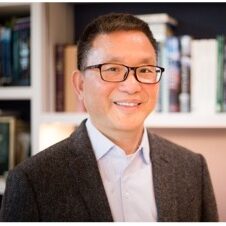
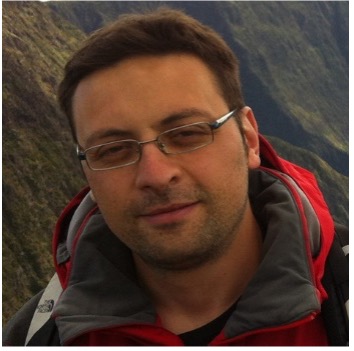

Positioned at the vanguard of environmental science, this course centers on contemporary developments in groundwater quality assessment. It aims to explore contaminants' origins and behavior within subsurface geochemical environments. Ecological isotopes, particularly CSIA, represent cutting-edge methodologies in contaminant studies. The curriculum encompasses foundational theory, supplemented by various field case studies. Topics encompass the utilization of environmental isotopes such as 13C, 2H, 18O, 87Sr/86Sr, 37Cl, 81Br, and 3H to delineate contaminant origins and attenuation mechanisms within aquifers. Discussion extends to groundwater pollution from diverse sources, including LNAPLs, DNAPLs, and urban activities. Additionally, the course surveys recent advancements in 13C-CSIA, 37Cl-CSIA, 81Br-CSIA, and 2H-CSIA, elucidating their potential applications in contaminated site characterization. Furthermore, the course addresses the role of groundwater as a renewable energy source, particularly in hydroelectricity and geothermal energy production. Topics include source tracing and residence time determination, which are crucial for evaluating resource sustainability. While short-lived nuclides like 3H and 14C are well-suited for assessing young groundwater ages, geological fluids pertinent to geothermal energy often surpass the applicability of these methods, necessitating the utilization of alternative isotopic systems such as noble gases, actinides, or radiogenic isotopes. The course integrates theoretical discourse with global case studies to illustrate how these isotopes can refine understanding regarding the sources and ages of fluids implicated in energy resource utilization.

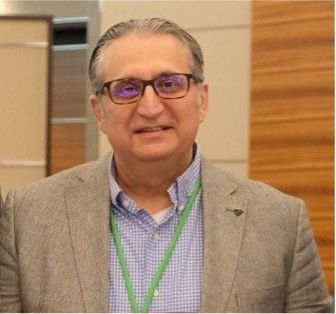

“Publish or perish” can be a terrifying taunt for early career scientists across all disciplines, especially for those with English as a second or third language. Although timely and high-impact publications are a requirement for climbing the academic ladder, most researchers rarely have the time or opportunity to improve their science writing skills for publishing in English. In fact, a large number of manuscripts may face immediate rejection—even prior to review—simply owing to poor English. Don’t let this happen to you! This half-day workshop will provide easy and logical tips to quickly improve your English scientific writing skills, tools to craft a powerful manuscript and reviewer response techniques, and a support framework to expand the limits of your comfort zone in scientific writing in English. We will use hands-on exercises to identify and remedy poor syntax, improve clarity with less words, and alleviate language barriers blocking your way to successful publication. Participants are invited to bring a manuscript or text they are working on, and will have the opportunity to schedule a one-on-one coaching session throughout the remainder of the IAGC-3 meeting. The workshop will be led by Dr. Esther Posner, an American academic editor with a PhD in experimental and theoretical geochemistry and recipient of the American Geophysical Union’s 2018 Mineral and Rock Physics Graduate Research Award. Dr. Posner is passionate about effective science communication and has edited over 1000 scientific manuscripts written by non-native English-speakers. In 2022, Dr. Posner joined Elements Magazine as Executive Editor, while continuing to support scientists communicate their research in the most clear, efficient, genuine, and powerful way possible. To register or learn more, contact editor@elementsmagazine.org.

Geochemical modeling is a powerful tool, which has wide applications such as geothermal energy, CO2 storage in saline aquifers and basalts, and groundwater contamination and remediation. Recently, new databases, code enhancements, and utilities associated with computer programs have expanded the applicable ranges of these modeling tools. This short course will introduce these new tools and use examples to demonstrate these expanded geochemical modeling capabilities with examples. Special attention will be devoted to the use of first principles-constrained thermodynamic datasets for geochemical modelling and their application to phase equilibrium calculations up to very high pressure and temperature conditions. Practicals and hands-on tutorial on Gibbs free energy minimization method by in-house computer codes will be also provided during the short course.
Positioned at the vanguard of environmental science, this course centers on contemporary developments in groundwater quality assessment. It aims to explore contaminants' origins and behavior within subsurface geochemical environments. Ecological isotopes, particularly CSIA, represent cutting-edge methodologies in contaminant studies. The curriculum encompasses foundational theory, supplemented by various field case studies. Topics encompass the utilization of environmental isotopes such as 13C, 2H, 18O, 87Sr/86Sr, 37Cl, 81Br, and 3H to delineate contaminant origins and attenuation mechanisms within aquifers. Discussion extends to groundwater pollution from diverse sources, including LNAPLs, DNAPLs, and urban activities. Additionally, the course surveys recent advancements in 13C-CSIA, 37Cl-CSIA, 81Br-CSIA, and 2H-CSIA, elucidating their potential applications in contaminated site characterization. Furthermore, the course addresses the role of groundwater as a renewable energy source, particularly in hydroelectricity and geothermal energy production. Topics include source tracing and residence time determination, which are crucial for evaluating resource sustainability. While short-lived nuclides like 3H and 14C are well-suited for assessing young groundwater ages, geological fluids pertinent to geothermal energy often surpass the applicability of these methods, necessitating the utilization of alternative isotopic systems such as noble gases, actinides, or radiogenic isotopes. The course integrates theoretical discourse with global case studies to illustrate how these isotopes can refine understanding regarding the sources and ages of fluids implicated in energy resource utilization.
The chemical characteristics and quality of groundwater and surface water depend primarily on the geology and mineralogy of the catchment, interactions with atmospheric gases, biological processes, and are increasingly influenced by anthropogenic impacts. How can all these processes interfere with each other and, in particular, what are the feedbacks of contamination processes on natural hydrogeochemical processes is the key goal of a modern hydrological research. The many factors that affect water chemistry generate complex compositional dynamics that make it difficult to interpret data and compositional changes in both space and time using simple tools. Therefore, it is important to complement the classical geochemical and isotopic tracer studies, with innovative tools for water quality monitoring and compositional data analysis. Advances in understanding these complex geochemical systems and our ability to distinguish anthropogenic impacts from natural processes will help us identify potential sources of contamination at both local and global scales. Chairs: Francesco Frondini (University of Perugia – Italy); Caterina Gozzi (University of Florence – Italy)
Isotopes are exceptional tracers that enable us to investigate Earth’s natural cycles both in the modern world and throughout geologic time. This general session invites contributions from Earth sciences where isotopes are critical to unraveling natural processes, hazards, biogeochemical cycles, and climate perturbations. We welcome scientists at all career stages to contribute their research that quantify rates of change of those processes, and interactions between terrestrial reservoirs at different space and time scales. Conveners: Richard Wanty (U.S. Geological Survey -USA), Ryan Venturelli (Colorado School of Mines – USA), Devin Smith (The Ohio State University – USA)
Large amounts of volatiles are transferred from the depth towards the Earth surface and into the atmosphere at volcanic environments, geothermal areas and at tectonically active regions. Quantifying volatile fluxes and their spatio-temporal variation is of crucial importance for the comprehension of global geochemical cycles and the impact of geogenic volatiles on atmosphere and climate. The study of fluxes contributes to the monitoring and understanding of volcano dynamics and earthquake generation. Spatial variations of volatile emissions help identify hidden tectonic structures and provide information for gas hazard assessment. Fluxes of volatiles are an integral part for understanding processes occurring during water-rock interactions. This session focusses on theoretical, experimental and applied aspects of the study of volatile fluxes in geologic systems at all temporal and spatial scales. We invite contributions from the broad disciplines of geochemistry, volcanology and petrology. We also invite interdisciplinary approaches and presentations of novel instrumental and numerical methods, including Machine Learning approaches, for quantifying and identifying patterns of volatile emissions. Contributions that address to global cycles, climate impact, volcanic and tectonic unrest or hazards are also welcome. Chairs: Carlo Cardellini (University of Perugia, Italy); Fátima Viveiros (IVAR – University of the Azores, Ponta Delgada, Portugal), Tobias Fischer (University of New Mexico, USA), Santiago Arellano (Chalmers University of Technology, Gothenburg, Sweden)
Chemical and isotopic compositions of gases from volcanic and hydrothermal environments are depending on (i) a composite mixing of fluids from primary sources (e.g., magmatic degassing, thermal and microbial biodegradation, radiogenic decay, meteoric and seawater contributions) and (ii) secondary processes, including scrubbing of soluble species and fluid-rock interactions. Theoretical geochemical modeling based on analytical data represents an effective tool for distinguishing among different gas sources and defining mechanisms of fluid production and evolution, providing information of fundamental importance for both volcano monitoring and prospection/exploitation surveys of geothermal resources, aiming to the mitigation of volcanic hazard and the ecological transition to renewable and sustainable energy resources, respectively. This proposal is open to studies adopting integrated empirical and theoretical approaches to investigate chemical-physical processes acting on the geochemistry of gases from fumarolic vents, exploratory and production wells, bubbling and boiling pools occurring in quiescent-to-active volcanoes and geothermal systems. Small-to-large scale case studies showing either traditional or innovative interpretation of original and published dataset are welcome. Gas-water-rock interaction processes governing the progressive transition from magmatic to hydrothermal fluids represents a special focus of this session, with the aim to encourage and promote the use of new geochemical tracers and geoindicators as well as innovative data treatment techniques. Chairs: Franco Tassi (University of Florence, Italy); Artur Ionescu, (Babes-Bolyi University – Romania); Laszlo Palcsu, (ATOMKI -Hungary)
The intricate relationship between the geosphere and biosphere has been a driving force in shaping Earth’s surface environment, influencing both the evolution of life and the development of geochemical cycles. Understanding these complex interactions requires a multidisciplinary approach, integrating insights from geochemistry, microbiology, geology, and hydrology. This session will focus on the dynamic interplay between life and the solid Earth, mediated by water-rock interactions. Water acts as a crucial medium through which biotic and abiotic components interact, influencing the geochemical processes that shape our planet. From the deep subsurface to surface ecosystems, the interactions between microbes, minerals, and fluids play a pivotal role in the coevolution of the geosphere and biosphere. This session aims to explore how these interactions emerge, evolve, and function across different temporal and spatial scales, and how they can be reconstructed to understand their relative contributions to geochemical processes. We invite contributions that showcase novel approaches and methodologies for deciphering the geosphere-biosphere nexus, with particular emphasis on studies that bridge traditional disciplinary boundaries. Contributions may range from molecular-level investigations to ecosystem-scale studies, and from present-day processes to deep-time reconstructions. Studies addressing diverse (eco)systems, including extreme environments, as well as those employing advanced geochemical techniques to tease apart biotic and abiotic influences, are particularly encouraged. By bringing together a diverse array of research, this session aims to foster a deeper understanding of how life and the solid Earth have coevolved, highlighting the fundamental role of water-rock interactions in mediating these processes. The insights gained from these studies will enhance our ability to predict and model future geochemical and environmental changes on our planet. Donato Giovannelli (University of Naples Federico II – Italy); Alberto Vitale Brovarone (University of Bologna – Italy); Shawn McGlynn (Earth-Life Science Institute, Tokyo Tech – Japan)
Determining groundwater “age” in an aquifer is fundamental for a correct evaluation of the sustainability of the resource, yet it is a complex matter to handle. It requests the use of age tracers, i.e., elements introduced in the system by anthropogenic activities (CFC, 3H, etc.) or isotopes produced by radioactive parent elements (U-Th/4He, 14C, 81Kr, etc.). However, several assumptions need to be respected to obtain significant ages: age tracers need to travel synchronously with water (which is a rare phenomenon); water must be sampled in specific horizons (which is difficult in open wells); underground flow must be characterized. This session aims to bring together the community that works on groundwater ages using classical age tracers such as 14C, 3H/3He, or 36Cl and new methodologies such as 81Kr or CFC to present challenges in applying these methods in different hydrogeological situations. This session will cover all advancements in this field, including sample collection, measurements, and case histories. Chairs: Wei Jiang (University of Science and Technology of China: Hefei – China); Christoph Gerber (CSIRO – Australia).
This session will address the mineralogical and geochemical aspects of dispersion of the metalloids arsenic, antimony, and bismuth in the environment. We are seeking contributions that characterize the processes which mobilize or retain these elements, beyond a mere statement of sites being contaminated by them. Field studies that document the speciation changes, temporal and spatial variations, and geochemical interactions, are welcome. They may also include the action of biota, either by formation or destruction of the solid phases. Experimental studies, targeting improved understanding of natural systems or innovative technologies for the capture of the title elements, will be also gladly accepted. The session will also tackle the question of scalability of the current knowledge to sites which are not strongly polluted and to speciation of these elements in weakly polluted settings, including both terrestrial and marine environments. We are also interested in thermodynamic and kinetic studies on minerals of As, Sb, and Bi that quantitatively describe their stability and dissolution behavior. Chairs: Juraj Majzlan (University of Jena – Germany); Montserrat Filella (University of Geneva – Swuisse); Patrizia Onnis (University of Cagliari – Italy)
The assessment of both geochemical background and anthropogenic baseline allows us to understand the impact of chemical pollution at local and planetary scale. Geochemical data on water and soil have been collected since tens of years driving management of chemical pollution and remediation all over the world. Awareness of geochemical background and anthropogenic baseline is crucial to the sustainability of anthropogenic activities. The scientific community is doing a tremendous effort to develop effective tools for understanding fluxes among geochemical spheres, risk arising from pollutant dispersion, and the assessment of pollutants bioavailability. Regulation is now responding to research advances. This session solicits contribution on i) water and soil baseline assessment regarding natural and anthropized areas (i.e. abandoned mine sites), ii) chemical and mineral speciation of pollutants, iii) mapping geochemical background in water bodies and soils, iv) risk assessment, v) techniques and tools to measure pollutants fluxes, pathways and their impact on target, vi) regulation upgrade. Chairs: Roberto Dessì (ARPAS- Italy); Maurizio Testa (ARPAS – Italy); Newman Connor (USGS – USA)
It has now clearly been established that atmospheric contaminants affect the climate, ecosystems, and human health. Isotope geochemistry has now demonstrated its added value for both identifying the sources and characterizing the processes that control their budget. Isotope systematics usually allow to unambiguously discriminate the emission sources of distinct origins and/or to characterize the specific processes that affect their behaviors. In this session, we aim to fill gaps on the application of isotope geochemistry (including measurements of radioactive and stable isotopes ratios of trace elements and organic components) on environmental research by welcoming original contributions on studies developing applications in air contaminant characterization, pollution, environmental changes, as well as modeling or empirical studies aimed at improving our mechanistic understanding of short- and long-term chemical/isotope variations in global atmospheric systems. Submission of inter- and multidisciplinary original research and review papers is also encouraged. Chairs: David Widory (University of QUEBEC at Montreal – Canada); Sanjeev Dasari (University of Oxford – UK)
Mining operations and management of their effluents and wastes (e.g. tailing materials) pose potential threats to aquatic ecosystem, and the contaminant discharge (e.g. acid drainage, toxic elements) or failures often result in a wide range of negative environmental, social and economic consequences. Stakeholders close to mine sites are concerned about the availability of water for local use, the security of access, and the potential for serious water contamination. In most mining operations, freshwater is obtained from groundwater, rivers, streams, and lakes, and its use often leads to serious tensions. Mining operations are rapidly changing, and in many countries the potential environmental and social impacts need to be assessed and taken into account in every stage of the mine development (planning, operation, closure and post-closure). Moreover, many areas are confronted with the need to manage derelict mines and/or re-evaluate the mine tailings as potential source of elements of present-day interest (e.g. REE). Stable and radioactive isotopes of water, dissolved substances, and gases in and around mine complexes can fingerprint and trace the origin, age, flow, transport and all the complex hydrological phenomena involving water sources availability. They also contribute to understanding and quantification of water-rock interaction processes potentially affecting water quality. New isotopes (e.g. nitrate and metal isotopes) have been considered over the past years to further develop multi-tracer approaches toward a deeper understanding of the water and solute fluxes. The objective of this session is therefore to collect contributions from case studies providing a wide range of examples of isotope applications worldwide, and to foster a widespread knowledge of isotopic and geochemical approaches in mining-related studies. Chairs: Elisa Sacchi (University of Pavia – Italy), Frederic Huneau (University of Corsica, France)
The certification of food products, their authenticity and origins has become a growing priority amongst consumers and producers. Recently, the utilization of numerous isotope systematics in that field has rapidly increased due to their ability to offer accurate and reliable insights into the origin, authenticity, and quality of food products. Isotope analysis entails measuring stable isotopes like carbon, nitrogen, hydrogen, oxygen, but also non-traditional isotopic systematics such as strontium, lead, boron or neodymium, which serve as inherent markers reflecting the geographical, climatic, and environmental conditions of food production. The aim of this session is to shed more light on scientific advancements in this field, encompassing topics such as geographical origin determination, production methods, and detection of adulterants or contaminants. Chairs: Monica Rosell (University of Barcellona – Spain), Paola Iacumin (University of Parma – Italy), David Widory (University of Quebec at Montreal – Canada) Keynote Nives Ogrinc (Jožef Stefan Institute Slovenia)
Mineral nanoparticles and nanominerals are ubiquitous across the diversity of environments at the Earth’s surface. Their sheer numbers and distinct physical properties can combine to have important impacts on mass and electron fluxes during periods of (bio)geochemically and microbially driven change. This topical session will feature the latest research from the atomic to the mesoscale focused on understanding reaction mechanisms and rates occurring at nanoparticle-water or nanoparticle-microbe interfaces, how these differ from bulk mineral reaction counterparts, and how these differences scale-up to impact collective system reaction observables. Processes of interest include those that entail nanoparticle growth, dissolution, redox transformation, transport, aggregation, self-assembly, adsorption/incorporation of nutrients and elements, and reactions catalyzed by solar light absorption in nanoparticles. Laboratory experimental or field-based studies coupled to computational, mechanistic and/or atomistic modeling are particularly encouraged. Juan Liu (Peking University -China); Kevin Rosso, (PNLL- USA) ; Keisuke Fukushi (Kanazawa University -Japan)
Geochemistry is a key tool to investigate the complexity of interior, surficial and atmospheric processes of planetary bodies. This session seeks to compile a diverse array of planetary studies with a robust geological foundation. In this session, we welcome contributions of different aspects of planetary studies, including: geophysical or geochemical models for reconstructing planetary interiors, surfaces and atmospheres as well as experimental and theoretical approaches in petrology and mineralogy for the investigation of planetary bodies, analysis of meteoritic materials and their isotopic signature, astrobiology and emergence of life on planets, study and characterization of planetary analogues, and the examination of planetary surfaces through the interpretation of spectral features or structural and morphological forms observed by spacecraft or rovers. The significance of geochemical and geological research within the extended field of planetary science is indispensable for unravelling the natural evolution of solid celestial bodies, both within our Solar System and in extrasolar systems. Insights into the current and historical processes of planetary bodies are derived from data collected through remote or in situ observations, which are interpreted by comparing them with terrestrial processes and analogues, and applying geological techniques and constraints appropriately. Investigating the geology of primordial planetary bodies enhances our comprehension of the early history of Earth and of its evolution. In addition, volatiles represent a perfect link between the interior and the atmosphere of a planet. Their investigation and characterization through modelling, experiments and observations is central to analyse the evolution of the Earth and of other planetary bodies, and can thus help guide our quest to find habitable conditions or other life forms outside of our Earth. Researchers from various scientific disciplines are invited to participate in this session, fostering constructive discussions and multidisciplinary collaborations in order to provide to the community of geochemical studies new insights and perspectives for the advancements of planetary studies in different disciplines. Chairs Alessandro Pisello (University of Perugia – Italy); Gianluigi Ortenzi (INGV Catania – Italy); Mickael Baqué (DLR Berlin -Germany); Maryse Napoleoni (FU Berlin – Germany)
Organisms form minerals, or biominerals, as they inhabit their environments. Inescapably, the environment leaves signatures on the final biomineral, which can then be interpreted as proxies to reconstruct paleo-environments before, during, and after dramatically changing climates that led to mass extinctions, correlate with modern environments, or predict future responses to climate change. Speakers and listeners from the biomineralization community, the proxies-geochemistry community and the environmental and climate change communities will come together to share their separate expertise in this diverse session. We invite contribution from people working on pH, temperature, salinity, elemental or isotopic composition, crystallography, or any other geochemical observations, correlations, and proxies to reveal past, present, and future responses to climate change. Chairs Pupa Gilbert (University of Wisconsin – USA), Cristina Castillo Alvarez (Lawrence Berkeley National Laboratory – USA), Giovanni De Giudici (University of Cagliari – Italy)
The large scale facilities (LSF), surely including, but not limiting to, synchrotron and neutron sources, are enabling the experimental access to a number of information that can closely constrain the processes involved in the water-rock interaction. This session focuses on the recent progresses achieved both in the experimental investigation and in the computational models concerning water-rock interactions. The session is aimed to cover the application of LSF both to ambient and extreme conditions (with special focus to high temperature and high-pressure environment). The session welcome contributions ranging from the experimental studies on novel systems, computational studies, new experimental or analytical set-ups. These integrated approaches will allow us to get significant insights on processes and systems from the macroscopic down to the nanosized and atomic scale. Chairs: Francesco Di Benedetto (University of Ferrara – Italy); Carlo Meneghini (University of Rome 3 -Italy); Simone Anzellini (University of Valencia – Spain); Joel Brugger (Monash University – Australia)
Coupling between rates of water-rock reactions, solute transport, and fluid flow controls the spatial and temporal scaling of geochemical processes in natural and engineered systems. Where heterogeneity in ether mineral distribution or pathways for fluid flow are strong, quantifying and predicting rates and outcomes of geochemical processes depends more on local scale conditions than average system characteristics. This session will focus on techniques to measure or quantify local geochemical conditions at the pore, fracture, or reaction front scale in experimental and field systems to gain insight into the coupling of reaction and transport. The use of numerical reactive transport simulation is also a powerful technique to explore reactive transport at varying time and length scales and we encourage submissions where experimental or field data is integrated with models to interpret geochemical processes and rates in coupled reactive transport. Chairs: Alexis Sitchler (Colorado School of Mine – USA); Hang Deng (Peking University – China)
Interactions between geosphere, hydrosphere and biosphere are key parameters to characterize and quantify to describe and modelize the Critical Zone functionning. Isotopes are powerful tools for tracing biogeochemical cycles, cellular processes, past metabolisms, and anthropogenic effects. This session will delve into the full spectrum of isotope applications, from life-related stable isotopes (CHONS) to non-traditional and radiogenic, exploring their applications in the Critical Zone and more widely in the biosphere and environmental sciences Chair(s): Jerome Viers (Université Toulouse III – Paul Sabatier), Rich Wanty (U.S. Geological Survey), François Chabaux, Nathalie Vigier (Laboratoire d’Océanographie de Villefranche- France), Vasileios Mavromatis (University of Bern-Switzerland)
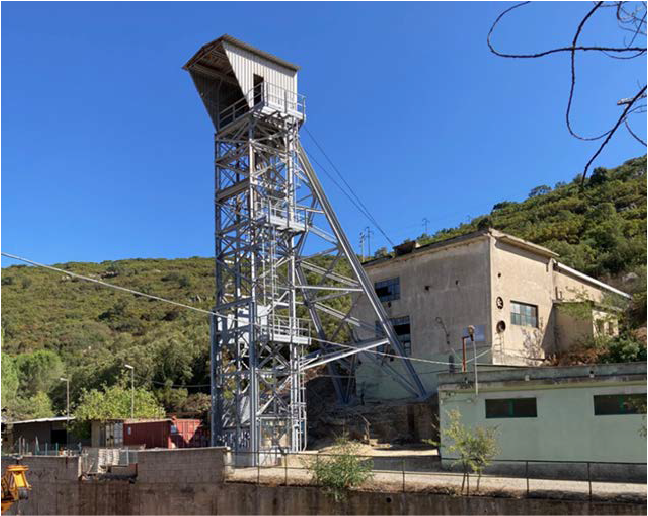
Visit a fluorspar underground mine and a famous Sardinian winery
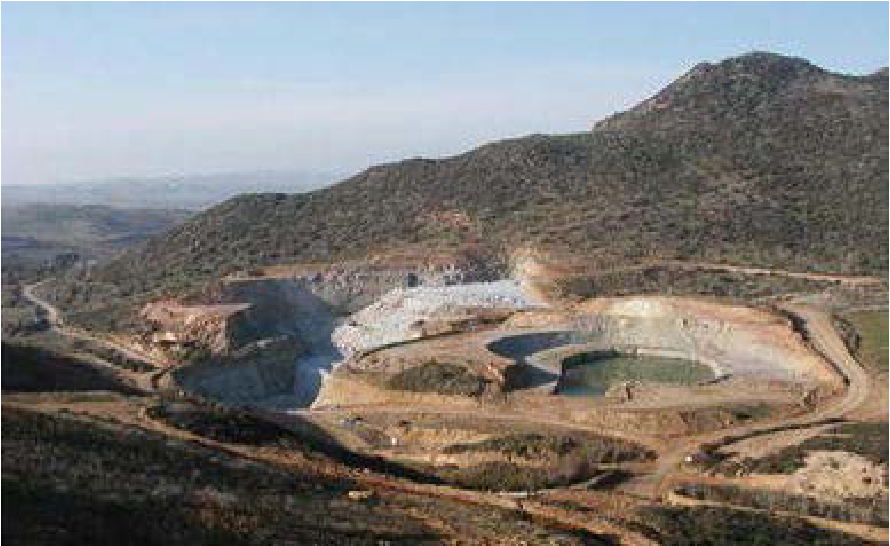
Visit a historical gold mine and an active geothermal system
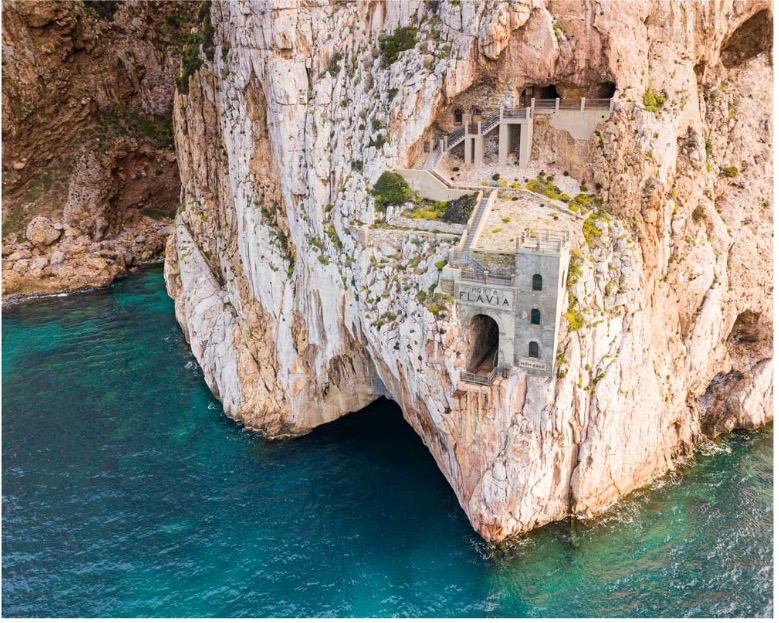
Wonderful caves and mine galleries

Geothermal springs and pool and a typical Sardinian Nuraghe
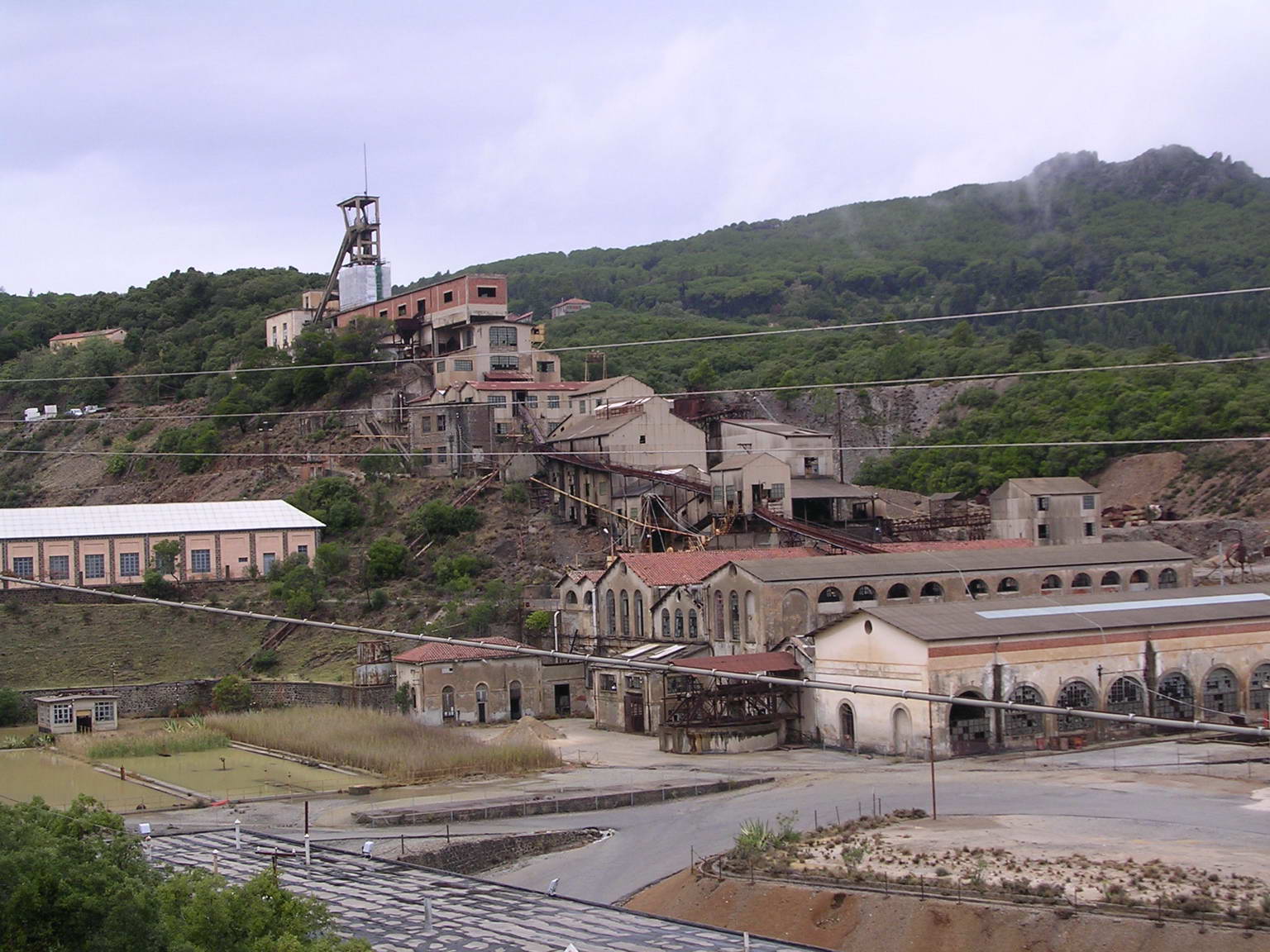
Visit a complex of abandoned mines in the south-west of Sardinia
Sustainable forms of energies play a vital role in the effort of decarbonizing our societies and ensure that energy consumption will not compromise the needs of future generations. A decarbonized world relies on the efficient consumption of renewable energy, included the geothermal one. Geothermal energy exploits a wide range of heat sources, with low-enthalpy fluids typically used for heating/cooling buildings and greenhouses, and high-enthalpy fluids exploited for electricity production. Current frontiers of geothermal energy research and development include the feasibility assessment of hot dry rock systems (HDR) or supercritical enhanced geothermal systems (EGS), under temperature conditions (400˚C or higher) beyond the limits of present-day drilling and exploitation engineering, but also the utilization of geopressured geological formations or the repurposing of depleted oil and gas reservoirs at moderate temperature (generally below 150°C). Furthermore, the optimization of the resources already under exploitation calls for a deeper understanding of the coupled chemical and physical processes that control fluid transport, phase segregation, fluid-mineral reactivity and permeability/porosity variations under reservoir conditions, to improve reinjection strategies to prolongate the lifetime of the exploited resource. This session will address all aspects of geochemistry and geophysics methodologies used for improving our understanding of gas-water-rock interactions in geothermal science, covering (but not limited to) topics like: geochemical/reactive transport models and laboratory experiments on water-rock interactions; operation of geothermal reservoirs with CO2 as working fluid; physical chemistry of superhot/supercritical systems; use of isotopic tracers in the prospection/management of geothermal systems; chemical stimulation of geothermal reservoirs. Contributions that use an interdisciplinary approach to advance the understanding of these topics are welcome. Chairs: Fabrizio Gherardi (CNR-IGG, Pisa, Italy) and Daniele Pinti (Université du Québec, Montréal, Canada) Keynote speaker: Tianfu Xu (Jilin University, Changchun, China)
To tackle the climate emergency, keep global warming below 1.5°C and achieve climate neutrality by 2050, Europe needs all major decarbonisation options available, including Carbon Capture, Utilization and Storage (CCS and CCUS) and hydrogen production, storage, and use. This session aims to discuss all current research related to the new development of hydrogen and CO2 related technologies and the associated value chain. We invite contributions from all aspects of CCS and CCUS research, including assessment of storage potential and reservoir permeability, fluid-rock interaction studies and mineral CCS, geological, geochemical and numerical modelling and laboratory and field experiments, biogeochemical approaches, carbonation of various wastes and utilisation of carbonated products. We also invite research exploring CCS coupled with blue hydrogen production as well as the hydrogen storage in geological formation, and the new frontiers in the exploration of natural geological hydrogen. Chairs: Yousif Kharaka (USGS – USA); Chiara Boschi (IGG-CNR Italy)
Compound-Specific Isotope Analysis (CSIA) has emerged as a pivotal technique in environmental science, offering profound insights into the complexities of biogeochemical processes, tracing contaminant sources, and understanding ecological dynamics. This analytical method focuses on the isotopic composition of individual compounds, allowing researchers to dissect intricate environmental and forensic phenomena with unprecedented precision. This scientific session is designed to bring together experts and practitioners in the field of CSIA to share their latest research findings, address ongoing challenges, and chart future research directions. By fostering a collaborative environment, the session aims to advance the collective understanding of CSIA and its applications across various domains. Key topics to be covered include the foundational principles of CSIA, which underpin its effectiveness in tracing chemical processes and environmental changes. Advances in instrumentation and methodologies will be a central theme, as technological improvements continue to enhance the sensitivity, accuracy, and range of CSIA. Presentations will explore the latest developments in analytical techniques, which enable more detailed and reliable isotope measurements. The session will also delve into laboratory and microcosm experiments, where controlled conditions allow for the examination of isotope behavior and transformation in isolated environments. These experiments provide crucial data for interpreting complex environmental interactions and assessing the impact of contaminants. Field site applications of CSIA will be another significant focus. By applying this technique in real-world settings, researchers can trace pollution sources, understand natural processes, and evaluate the effectiveness of remediation strategies. Case studies and fieldwork results will illustrate the practical applications and benefits of CSIA in environmental monitoring and management. Finally, the session will address future directions and emerging trends in CSIA research. As the field evolves, new challenges and opportunities arise, including the integration of CSIA with other analytical methods and the development of novel applications. Both oral and poster presentations will be featured, providing a comprehensive overview of current advancements and encouraging interactive discussions among attendees. Overall, this session aims to highlight the transformative potential of CSIA in advancing environmental and forensic science, driving innovation, and fostering interdisciplinary collaboration. Chairs Daniel Hunkeler (University of Neuchâtel) – Martin Elsner (Technical University of Munich) – Jordi Palau Capdevila (University of Barcelona)
The transition to a low carbon society will necessarily pass through a sharp increase in the global demand for minerals, metals and new forms of “clean energies”. Metals critical to the energy transition (e.g., Ni, Mn, Co, Li, Cu, Ag, Al, Pt, Rare Earth Elements…) are increasingly requested for electricity generation from solar, eolian, and hydro power, and for production of batteries for electric vehicles and energy storage. Recent developments in research and instrumental methodology have resulted in an unprecedented emphasis on critical minerals and innovative techniques for discovering new unconventional resources and preserving known ones. The aim of this session is to showcase and integrate complementary state-of-the art approaches to geochemical exploration and environmental monitoring to provide new insights into exploration for critical minerals and to identify present and future challenges. The session will invite contributions showing how geochemical and isotopic tools can be helpful in the isotopic application in determining the sustainability of groundwater resources, understanding of magmatic and crustal processes leading to the formation of ore deposits of critical metals (Li, Co, Cu, Sr, trace elements) and natural resources (hydrogen, helium). Chairs Gordon Williams (Duke University – USA), Tiziano Boschetti (University of Parma -Italy)
This session represents a cutting-edge exploration into the latest advancements in isotope geochemistry, with a focus on the most recent developments in mass spectrometry. As technology continues to progress, mass spectrometry has expanded the range of isotopes available for study in Earth sciences, enabling more precise and detailed analyses of geological and environmental samples. This session aims to highlight these advancements and their implications for the field. A significant aspect of the session will be the discussion of challenges associated with developing new international certification standards for isotopic analysis. Whether dealing with classical stable isotope applications or more specialized CSIA standards, researchers face the ongoing difficulty of ensuring the elemental and isotopic homogeneity and stability. The session will address how these challenges are being met through the development of more accurate and reliable standards, which are crucial for maintaining consistency and accuracy in isotopic measurements. In addition, the session will showcase newly developed isotopic methodologies and their practical applications in Earth sciences and biogeochemistry. These innovative methods are transforming how researchers approach the study of isotopic compositions, offering enhanced sensitivity and resolution. Presentations will cover a range of topics, including new techniques for isotopic fractionation, improvements in analytical precision, and novel applications of isotopic data in understanding geological processes and biogeochemical cycles. Overall, this session will provide a comprehensive overview of the state-of-the-art techniques and standards in isotope geochemistry, reflecting the dynamic nature of the field and its continuous evolution. By bringing together experts and showcasing the latest developments, the session aims to advance knowledge, address key challenges, and explore future directions in isotope geochemistry research. Chairs Orfan Shouakar-Stash (Isotope Tracer Technologies Inc.) – Martin Elsner (Technical University of Munich) – Jodie Miller (IAEA)
Our society’s transition to green energy, such as hydrogen and geothermal energy, as well as the need for removing carbon dioxide (CDR) through geochemical processes like enhanced rock weathering (ERW) and storing CO₂ in basalts and sandstone aquifers, has renewed our interest in the thermodynamics and kinetics of geochemical reactions. For the example of critical minerals, understanding the fundamental geochemical processes involved in the transport, distribution, formation, extraction, chemical processing, and recycling of critical minerals is essential. This knowledge is crucial for discovering new resources and developing environmentally friendly extraction technologies. This session invites submissions that cover experimental, theoretical, and molecular-level research on geochemical thermodynamics and kinetics. We also welcome presentations that identify knowledge gaps, build bridges between basic research and industrial applications, develop educational curricula, and promote data sharing following the FAIR guidelines. Chairs Chen Zhu (Indiana University -USA); Donato Belmonte, (University of Genoa – Italy)
Water-rock interactions are critical in ore-forming processes involving numerous classes of mineral deposits. In endogenic environments, ore mineral concentration may be an effect of physicochemical evolution of hydrothermal fluids of various nature migrating in different ways into the crust. This involves multiple interactions with the rocks traversed, which may act as sources and chemical and physical traps for metals. Moreover, water-rock interactions lead the development of the alteration patterns around the mineral deposits, providing fundamental guides for mineral exploration. In exogenic environments, water-rock interactions may also have a critical role, e.g., driving the formation of supergene deposits from primary ones. This session solicits contributions on the various topics related to water rock interactions involved in mineral systems and in the formation and supergene evolution of ore deposits. Chairs: Andrea Dini (IGG – CNR – Italy); Stefano Naitza (University of Cagliari – Italy), Yuan Mei (CSIRO Australia)
Industrial minerals are essential sources of raw materials in many fields of modern industry and are of considerable strategic importance for national economies. They originate from processes operating on the Earth’s surface and subsurface that involve various degree of reaction of water with rocks and minerals. These water-rock interactions play a crucial role not only in the formation of minerals but also in their application across different industrial sectors. This session will focus on the innovative use of industrial minerals in water treatment, including mining water, industrial wastewater, and groundwater. The session welcomes contributions that explore the formation processes of the most common industrial minerals, such as bentonites, zeolites, perlites, and others, and on the discovery of some characteristics of a mineral, previously unknown, which would open the way to new applications, perhaps covered in the past by other minerals with not always optimal results. Emphasis will be placed on the technological advancements in chemical and physical treatments of water related to industrial minerals. Topics of interest include, among the others, flocculation, filtration, and adsorption techniques, which leverage the unique properties of industrial minerals to enhance sustainability and environmental remediation efforts. Participants will discuss how these minerals, derived from raw material extraction, can be utilized to address critical challenges in water treatment. Case studies demonstrating the effectiveness of industrial minerals in removing contaminants, improving water quality, and contributing to sustainable practices will be welcome. The session aims to foster an interdisciplinary dialogue on the potential of industrial minerals to provide eco-friendly solutions in water management. By examining the intersection of mineral deposits and technological applications, attendees will gain a deeper understanding of how water-rock interactions can be harnessed to promote sustainability in industrial processes. The goal is to advance knowledge and inspire innovative approaches to using industrial minerals in addressing the global challenges of water treatment and environmental protection. Chairs: Stefano Milia (IGAG -CNR, – Italy); Fabio Granitzio (Sarda Bentoniti – Italy)
Critical Zone science has fostered a worldwide network of researchers and observatories promoting an integrated and multidisciplinary approach to studying Earth’s thin surface veneer. This session invites submissions that encompass experimental, observational, and modeling studies related to the critical zone. Additionally, we encourage reviews and synthesis reflecting on the past 25 years of critical zone research as well as proposed energy transition and climate change mitigation actions such as the exploration and mining of critical minerals and Enhanced Rock Weathering (ERW), which, if implemented on a global scale, could substantially alter the critical zone. Chairs: Sophie Opfergelt (Université catholique de Louvain, Belgium); Franziska Stamm (Graz University of Technology, Austria); Joel Brugger (Monash University, Australia); Alan Fryar (Univ of Kentucky, United States); Chen Zhu (Indiana University, USA); Keynote speakers Sue Brantley, Pennsylvania State University, USA. W Berry Lyons, Ohio State University, USA. Suzanne Anderson, University of Colorado, USA Geochemistry of Earth’s Surface Working Group Session
Hydrothermal and geothermal systems in active volcanic areas are rarely in steady state. Significant short-wavelength changes typically occur at short (days to months) timescales overprinting long-term (years) system evolution across the entire plumbing system of the volcanic setting. Such changes are often triggered by tectonic stress variations and can herald volcano unrest, changing the thermodynamic state of the system, affecting composition of fluids, rock permeability and fracture network, and ultimately cause volcanic hazard. In parallel, climate change imposes an energetic transition causing hydrothermal and geothermal systems to be investigated for the extraction of geothermal energy. Surface manifestations allow direct monitoring of geochemical and temperature parameters which are key data to assess magmatic vs. phreatic sources and the thermodynamic state of the system. Geophysical studies instead, provide a picture of the current state of the hydraulic system and are a useful tool to forecast its temporal evolution. A full geological characterization of hydrothermal systems allows gathering information on fluid flow, permeability distribution in fractured domains and the caprocks, and the stress system. Numerical simulations help in understanding and characterizing rock-fluid interaction processes and the geophysical observations associated with them. This session promotes discussions on the state of the art and recent advances on the knowledge and strategy to characterize hydrothermal systems at active volcanoes, and their potential use. We welcome studies aimed at characterizing and understanding the dynamics and peculiarity of these systems and their evolution through time. New approaches for the comprehensive interpretation of 4D multidisciplinary datasets are a key asset to promote future exploration, monitor hydrothermal fluids and hazard assessments associated with phreatic explosions, gas emission and volcano reactivation. Chairs: Matteo Lupi (Universitè de Gèneve – Swisse) Adriano Mazzini (University of Oslo -Norway) Laura Pioli (Università di Cagliari)
Considerable efforts have been invested in the last thirty years to determine the elementary mechanisms and rates of mineral dissolution-precipitation reactions and to generate rate equations that could be used to model chemical weathering and several related geochemical processes. Yet, existing kinetic data and current reactive transport models often fail to capture the complexity of water-rock interaction processes at different length scales, providing only approximate descriptions of the investigated phenomena. Recent progresses in modelling approaches and access to more advanced experimental and analytical tools able to provide more detailed and real-time data have spurred new interest into the study of various coupled processes occurring at the interface between fluids, rocks and living organisms. The study of the complex interplay among different physio-chemical variables is expected to provide improved kinetic parametrizations for fundamental processes such as: nucleation and growth of mineral phases; development of surface coatings and associated change of underlying mineral dissolution rates; time-dependent evolution of mineral surface reactivity; ion exchange and sorption reactions. Advances in the quantitative description of many of these environmentally relevant processes and better defined effects of flow regimes on reaction kinetics are key to improve the long-term predictions of geochemical models, and to help finding appropriate solutions to the pressing problems our society is facing in view of climate changes and the need of alternative energy resources and their sustainable development. We welcome contributions from experimental, computational, or field studies that address various kinetic aspects relevant to water-rock interactions with applications in, but not limited to, enhanced weathering, CO2 sequestration, hydrogen storage, biological weathering, biogeochemical cycling, enhanced geothermal systems, contaminant remediation, waste disposal and reactive transport modelling development. Chairs: Jordi Cama (IDAEA-CSIC – Spain); Giordano Montegrossi (CNR-IGG – Italy); Giuseppe Saldi (University of Perugia -Italy)
Knowing the crystal/solution interfaces is fundamental to gain more insights into kinetic processes occurring both in Nature and Laboratory during growth and dissolution phenomena. Nowadays, direct observations through advanced analytical instruments (i.e., confocal microscopy, glazing angle XRD, STEM-HRTEM, micro-Raman) and simulations by means of powerful computational tools (i.e., static ab initio calculations, empirical and quantum mechanical molecular dynamics) allow acquiring deeper knowledge about: the surface structure of minerals, their surface ad-absorption, and the complex epitaxy processes occurring on them. This section is open to experimental and computational/theoretical contributions devoted to the study of the mineral/solution interfaces. In particular, the session will be focused on: (i) structure of the mineral surfaces, (ii) ad-absorption of inorganic/organic impurities on crystal surfaces, along with their habit modifications and polymorphic transitions, (iii) growth/dissolution processes, (iv) epitaxial phenomena, (v) ordering/disordering of solvent molecules at the crystal/solution interface. Chairs M. Bruno (University of Turin – Italy); G. Valdrè (University of Bologna – Italy); A. Putnis (Curtin University – Australia)
Groundwater management requires a multidisciplinary approach that integrates isotope tools and age data analysis with geology, hydrogeology, and geochemistry. This session focuses on these combined methods to address the challenges of sustainable groundwater management. We invite papers that present innovative uses in hydrogeology of isotopes, gas and age dating tracers, emphasizing their role in understanding groundwater dynamics, quality, and flow. Papers should highlight the synergy between these fields and provide practical insights. The session will include oral and poster presentations and will encourage interactive discussions on the importance of a multidisciplinary perspective in groundwater research. The session will include both oral and poster presentations, fostering interactive discussions. Presenters are encouraged to underscore the multidisciplinary aspects of their work, emphasizing the significance of age data analysis and geochemical tools in addressing complex groundwater challenges. Chairs: Daniela Ducci (University of Naples, Italy); Daren Goody (British Geological Survey, BGS, Wallingford – UK); Andrea H. Manning (USGS – USA); Chiara Porru (University of Cagliari -Italy) IAH Italy session
It is estimated by 2050 two-thirds of the total human population will be living in urban areas. The very high population densities and associated human activities in cities increase the impact of human waste products from industrial activities, fossil fuel burning, and consumer products, food, and water consumption. In many locations the lack of adequate waste disposal enhances the problem of accelerated chemical introductions including those that are synthetic. The occurrence of the built infrastructure changes the hydrological cycle by the abundance of impervious surfaces redirecting water and chemical flows. In addition, infrastructure aging over time and other legacy activities can greatly alter biogeochemical cycles. Clearly, understanding the influence of urban areas on biogeochemical cycles is important for the well-being of urban citizens. In the session we encourage presentations on the impact of past, present, or anticipated future human activities on the biogeochemistry of the soil, water and atmosphere in urban settings. Emphasis will be placed on the identification and quantification of the anthropogenic alteration of biogeochemical cycles in cities, the global impact of cities on the transport and fate of chemicals in the surface environment, and implications to human and ecosystem health. Chairs: Enric Vazquez (IDAEA – Spain), David T Long (Michigan State University -USA), W Berry Lyons (The Ohio State University – USA)
Fluid regimes operating during high-temperature geological processes at depth dictate the stability of minerals and rheological properties of rocks in the Earth’s interior. Despite the common belief that predominant fluid-absent conditions govern in the deep lithosphere, a growing body of evidence shows that a wide variety of fluid species (not only melts, but also COH-fluids, and brines) may be present, impacting metamorphic reactions, petrological processes, and deformation. At greater depths, slab-derived fluids and melts in subduction zones interact with the lithospheric mantle, causing profound chemical changes. Therefore, quantifying the composition of fluids s.l. and understanding how they may influence metamorphism, anatexis, metasomatism, and deformation at different crustal and mantle levels is fundamental. Join us on this journey to unravel the role and importance of hot and deep fluid-rock interactions! We welcome contributions focused on high-temperature processes in the lithosphere through natural and experimental research on igneous and metamorphic petrology, mineralogy, microstructures, geochemistry, and geochronology. Chairs: B.B. Carvalho (University of Padua – Italy); Alessia Borghini (University of Kraków – Poland); Károly Hidas (IGME, CSIC, Spain); Zhao Liu (Northwest University, Xi’an, China)
Fluids and melts are fundamental for most of the geological processes taking place on our planet and beyond, and yet they are often difficult to target – unless we find fluid and melt inclusions in natural rocks! These portions of preserved fluids, often micrometric in scale, can be found in many minerals from sedimentary basin, fossil and recent hydrothermal systems, magmatic rocks and mineralized bodies. Fluid and melt inclusions investigation in all these geological settings has been ongoing for almost two centuries. Yet, this field of study keeps having a crucial role in unravelling Earth’s evolution and the redistribution-reconcentration of natural materials, from fossil fuels to critical raw materials in high demand for the ongoing green revolution. This session aims to bring together specialists of inclusion studies from the broad spectrum of Earth sciences to display the most recent advancements of fluid inclusion studies in sedimentary, magmatic and ore deposits, in order to promote fruitful contaminations across disciplines. Chairs: Silvio Ferrero (University of Cagliari – Italy); Giovanni Ruggeri (IGG-CNR, Italy)
Rare Earth Elements (REEs) have garnered substantial geopolitical and media attention in recent decades. They are included among the technologically-critical elements (TCEs) and are essential for many emerging technologies. Their application spans various high-tech sectors, including green energy, medicine, defense, and nuclear industries. In November 2023, the European Union reached a provisional agreement on the European Critical Raw Materials Act, which promotes local production, processing and recycling of critical elements, particularly REEs. Despite their essential role in the green energy transition, REEs production is associated with significant environmental impact, prompting efforts aimed at reducing this footprint. However, the effects of anthropogenic activities on REEs cycling remains largely unknown. The scientific community also utilizes REEs as tracers for natural geochemical processes and anthropogenic contamination. It is important to increase the knowledge on the geochemical behaviour of REEs and to extend their use as geochemical tracers. REEs distribution in the environment is influenced by input, removal, transport, fractionation and biogeochemical cycling. Understanding and disentangling these processes is a major challenge in contemporary geochemistry. This knowledge is crucial for predicting future changes across various environmental compartments due to both natural and anthropogenic factors, including pollution. Such factors can potentially affect REEs mobility, availability, biotic uptake, ecotoxicity, and, consequently, ecosystem services and human health. Increasing the knowledge on REE, also including their concentration in waste materials, we contribute to the exploration of new unconventional REEs sources. This session aims to bring together experts in geochemistry, biogeochemistry, and environmental sciences to discuss the latest advancements in research on REEs. Participants will have the opportunity to share insights on the following topics: 1) innovative analytical methodologies for the pre-concentration, separation and analysis of REEs; 2) investigations into the behavior of REEs, and their application as tracers in geochemical and biogeochemical processes; 3) prospective unconventional sources of REEs; 4) REEs cycles and its implications for ecosystems and human health; and 5) sustainable strategies for the recovery and utilization of REEs, among others. Marcella Barbera (University of Palermo – Italy); Sergio Calabrese (University of Palermo – INGV -Italy); Claudio Inguaggiato (CICESE – México); Yongjie Lin (Chinese Academy of Geological Sciences, Beijing – China) This session is dedicated to Prof. Paolo Censi who has recently passed away. Paolo worked at the Università degli Studi di Palermo, investigating REE for more than 25 years. He brought invaluable knowledge to this field and passionately training new generations of students.
Here you can find a list of the plenary lectures that will be held during the conference.
Dr. Aravena is a research professor who focuses on the application of isotope techniques in hydrology.
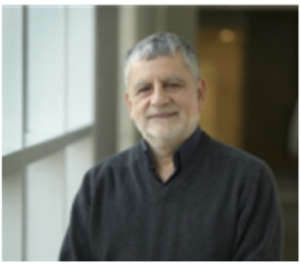
He has been involved in numerous groundwater studies in Latin America, Canada and the U.S. related to evaluation of groundwater resources and groundwater protection.
Ramon Aravena’s current research focuses on groundwater contamination caused by agricultural and urban activities. He uses environmental isotopes as tracers to provide information about sources and processes that affect contaminants.
During his 20+ years experience, he has been involved in numerous groundwater studies in Latin America, Canada and the U.S.
Mirco Barbero is policy officer in soil protection and sustainable land use; he leads the Soil Team since June 2019 within the Unit Land use and management, Directorate-General Environment, European Commission.
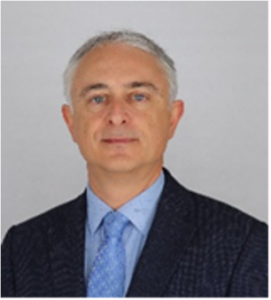
Mirco has a degree in physics and has worked for a dozen years in the private sector as responsible for the quality assurance of products and services. He joined the Commission in 2005 where he worked mainly as team leader in internal audit, advising the management on how to improve performance, governance and risk management in several policy areas.
He and his team have prepared the EU Soil Strategy and the proposal for the EU Soil Monitoring and Resilience Directive, negotiating it with the European Parliament and Council.
Donato Giovannelli is full professor of microbiology at the University of Naples “Federico II”, Italy. His current work lays at the interface between microbial ecology and microbial evolution.
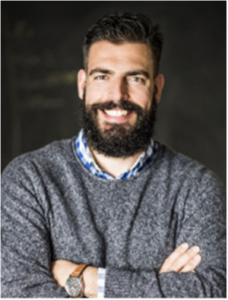
He is fundamentally interested in the co-evolution of the biosphere and the geosphere and how life influences planetary-scale processes. His current research focuses on two major themes, integrally linked to each other: 1) the microbial diversity and ecosystem functioning of extreme environments and their role in global biogeochemistry; and 2) reconstructing the emergence and evolution of metabolism. These diverse interests stem from three basic assumptions underlying his research: i) prokaryotes dominated the evolutionary history of our planet; ii) they are responsible for the bio in biogeochemistry both at the ecosystem level and through time; and iii) extremophilic prokaryotes living in extreme environments resembling early Earth analogs, despite being extant organisms, retain a higher number of ancestral metabolic traits. In his research, he integrates classic microbiology techniques with cutting-edge molecular and computational tools to investigate the role of microbes in shaping the environment, their interactions with abiotic factors and the drivers of evolution and adaptation. Therefore, the study of the prokaryotic diversity in geothermal environments potentially holds the key to a better understanding of the functioning of our planet, both in an ecological and evolutionary context. More specifically : i) the microbiology of across volcanic arc hot springs in Costa Rica and Panama subduction zones, looking at the effect of microbiology on arc volcano volatile cycling; ii) the reconstruction of the emergence and evolution of early carbon fixation in deep-branching thermophiles; and iii) the taxonomic and functional diversity of the microorganisms in shallow-water hydrothermal vents.
Jon Lloyd is Professor of Geomicrobiology at the University of Manchester. 
A particular focus of his group is the microbiology of the subsurface, and in this context, Lloyd has contributed more than 300 papers addressing the mechanisms and impact of microbial transformations of metals, radionuclides and organics in a range of natural and engineered environments. He has a particular interest in the use of geomicrobiological systems for bioremediation applications and for the processing of critical metals to support new clean technologies.
Awards for this work include the Geological Society of London Bigsby Medal, the Schlumberger Medal of the Mineralogical Society of Great Britain and Ireland while the UK Science Council has cited him as one of the Top 100 Practicing UK Scientists. Between 2010-14 he was a Royal Society Industrial Fellow, and from 2015-20 he was awarded a Royal Society Wolfson Merit award for his work on subsurface microbiology. He is the founding chair of the UK Geomicrobiology Network, and was President of the Mineralogical Society in 2021-22, and is a regular organiser of (and speaker at) national and international meetings on many aspects of environmental science/biotechnology. He is also a co-founding principal editor of the Geo-Bio Interfaces journal launched in 2023 by the Mineralogical Society and Cambridge University Press.
Daniele L. Pinti is a noble gas isotope geochemist, director of Geotop – one of the largest geoscience-oriented research centers in Canada – and full professor at the Earth and Atmospheric Sciences Department of the Université du Québec à Montréal.

In 1989, he obtained his MSc degree in Geology at the University of Rome, Italy, working on soil gases at Latera geothermal field, Central Italy. After a brief interval in the industry, he moved in 1991 at Université de Paris VI for a PhD in noble gas geochemistry applied to oil resources. In 1996, he joined the Earth and Planetary Science group at Osaka University, Japan, for a post-doctorate in Archean Geology, developing nitrogen isotopes as isotopic biomarkers with studies in Australia, Greenland, and South Africa. From 1999 to 2004, he was an assistant professor at the Université de Paris SUD, working on K-Ar dating. In 2004, he joined the UQAM, where he built a noble gas laboratory, with activities spanning from groundwater dating to geothermal resources. Since 2014, he is actively working on geothermal resources with projects in Mexico, Chile, Argentina, Iceland, La Reunion, Hawaii and Japan. He has authored more than 110 scientific papers.
Andri Stefánsson is a professor of geochemistry at the University of Iceland specializing in aqueous geochemistry, geothermal systems, and volcanic activity.
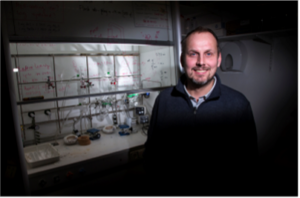
His research integrates experimental work to simulate hydrothermal fluid compostion, fluid-rock and fluid-fluid interactions and mineral formation processes. Stefánsson extensively uses isotopic analysis to trace geochemical processes, such as metal and volatile element behavoir in hydrothermal fluids, element origins, temperature conditions, and subsurface processes. His reserach contributions have helped understanding geothermal systems‘ sustainability and optimizing energy extraction and carbon sequestrion in geothermal systems – advancing both theoretical and applied aspects of geothermal science.
Dr. Sandra Ó. Snæbjörnsdóttir serves as Chief Scientist at Carbfix in Iceland, specializing in the injection of CO2 for mineral storage.
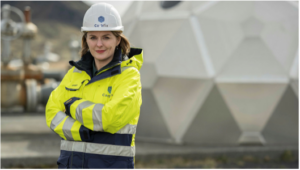
Sandra is a geologist with expertise in aqueous geochemistry and petrology. Her PhD studies focused on the world’s first injection of CO2 into basalts, carried out by Carbfix in 2012. She has since then worked on further developing this carbon storage method. Sandra has extensive experience overseeing feasibility studies, field site characterization, drilling, and monitoring campaigns related to planned and ongoing CO2 injections. One of her passions is building bridges between industry and academia—moving out of the protected environments of labs and into the field to accelerate the development of CO2 storage sites as a response to the current climate emergency. Carbfix collaborates with numerous prestigious research institutes on both project-specific research and various aspects of the Carbfix technology.
Dr. Ryan Venturelli is an Assistant Professor at Colorado School of Mines in the Department of Geology and Geological Engineering.
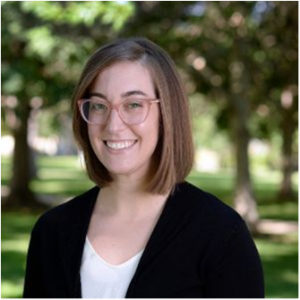
Dr. Venturelli’s research program uses radiocarbon-based tools and light stable isotopes to understand cryospheric change and biogeochemical cycling in polar regions.